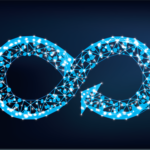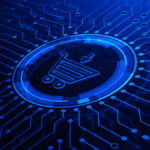Restaurant Facility Management Metrics.
How to measure to ensure the success of your programmRestaurant Facility Management Metrics and essential to ensure the success of your operation. Restaurant chains are continuing to face challenges in 2022 from the COVID-19 pandemic and shutdowns of 2020. According to the Nation Restaurant Organization, more than half of restaurant operators said it would be another year or more before business conditions return to normal. Food, labor, and occupancy costs are expected to remain elevated and continue to impact restaurant profit margins in 2022.
As businesses look for ways to help keep profit margins on the rise, facility managers have an opportunity to step up and show their impact on the business by improving efficiency, reducing operating costs, and keeping your locations in compliance.
This is where regular, scheduled maintenance comes into play. Having a cooler, freezer, or a specialized piece of cooking equipment break down can spell disaster for a restaurant. The key to keeping your restaurant chain’s performance at peak levels: is maintenance. More importantly, understanding the restaurant facility management metrics that drive that performance.
Any successful facility maintenance program runs on metrics to understand the performance of the facility, its physical assets, and its people. For restaurants, these metrics are essential to making intelligent decisions every day. Numbers don’t lie. Every restaurant chain facility manager should use the following metrics to clearly communicate their positions with the rest of the company and continue to ensure that they trust you to lead the way.
Not all metrics are created equally, so it is important that you pick the ones that make sense for your restaurants and set realistic KPI goals – along with meaningful steps to achieve them.
Below is a list of metrics that will show exactly the efficiency level of your maintenance program, improvements you can make, and goals you are achieving.
#1 Restaurant Facility Maintenance Metric Measures the Work Required to Maintain and Operate your Restaurants
To set any kind of goal or measure any level of success, you need to know where you’re starting. You need to understand some key numbers:
- Total number of work orders created for your specialized vendors every year
- The average time to complete the work orders (in days)
- The average time to complete a work order with internal resources
Once you’ve collected this basic information, the metrics you need to pay attention to are:
- What is your current work order response time, and what is the time frame definition? Are you only looking at the time between a work order being created and the time a service vendor schedules a repair? Or, are you looking at the time between the problem is identified and the issue is completely resolved?
- What is the difference between the self-identified work orders and the service requests? Is it good? What should it be?
All of this data is important to determine if your team is either understaffed or if you have the capacity to work on other projects. Taking a deeper dive into the data you’ve collected, other metrics to pay attention to are things like:
- What is the First Trip Resolution Percentage? (Reactive service request resolved with a single service provider visit)
- What are the numbers of backlogged and deferred work orders?
When you break these metrics down by category, you can derive insightful information and put it in context by calculating it as a running total of the number of incomplete work orders and help determine: Is it a labor issue? Is it a part issue? Is it time to find a new vendor?
# 2 Restaurant Facility Management Metrics Quantifies the Performance of your Equipment
The equipment in your restaurants is generally the source of most of your work orders. From coolers and freezers to HVAC units and cooking equipment – things break down. The data to measure equipment performance include :
- The number of unplanned repairs.
- The number of failures and unplanned replacements.
- The age of your equipment.
- The downtime of your equipment, broken down by category.
Equipment-based metrics can help you determine if there are changes that need to be made in your preventative maintenance schedule, or if you need to consider site-wide replacement of a particular brand of equipment.
Measure the Efficiency of your Repair and Facility Maintenance Operation
Preventive maintenance is critical to a facility management program, but you need to be able to track how well that maintenance schedule is performing. To break this data down into metrics that make sense, first determine:
- What portion of repairs and maintenance are reactive vs proactive?
This KPI measures whether your organization is stuck in a culture of reactive maintenance or is moving toward world-class or high-performance maintenance. This transition is important because reactive work costs four to six times more than planned and scheduled work. Best practices recommend that Managers should shoot for 20-30 percent of completed work is reactive.
Also, you need to break your maintenance program down by type of asset. This allows you to determine the assets that are too old and can lead to costly repairs versus replacing them.
# 3 Restaurant Facility Management Metrics: Preventive Maintenance Schedule Compliance
This KPI indicates whether the department is improving proactive maintenance. To succeed in the asset management and reliability categories of maintenance, you must have a disciplined PM program that produces results. A successful PM program includes all critical equipment, and technicians will complete 99 percent of PM inspections and procedures on time.
# 4 Metrics To Capture the Effectiveness of the Facility Maintenance Vendors you Selected to Outsource Specific Projects
Measuring your Vendor’s performance is important to understanding not only how long projects are taking, but how much you are spending. The Vendor Performance/Service Level Agreement KPI is all about the speed, coordination, time to completion, cost, and communication of your current vendors. Metrics to track are:
- How long do facility maintenance jobs take to complete?
(This should be broken down by Work Order Completion Time (Days): Total aggregate number of days to complete all work orders, divided by the total number of work orders.)
- How many problems were encountered?
- How many were completed on time?
- How many are over budget?
- How careful are they to minimize operation disruption?
- Do they offer means to streamline the process/reduce costs?
- Is billing accurate?
- Do they follow procedures and report status?
Not all vendors are created equally, but if you’re not tracking your vendor’s performance, you’ll never know when it’s time to find a new service provider.
# 5 Restaurant Facility Management Metrics Measures the Financial Health of your Program
The number one factor that the C-level executives are always looking at is the financial impact of any program or department. To be able to really show what your group does for the company, these are the metrics to highlight:
- Maintenance and Repairs Costs vs Budget
Track your actual spending every month to know if you are under, on, or over budget. Use data collected about ongoing repairs and maintenance, information about aging equipment, and information about upcoming restaurant refreshes or other massive initiatives to clearly document the funds that need to be allocated to your department when preparing the budget.
Total spend per year and year-over-year variation, broken down by quarter, broken down by category. This shows the strengths, and more importantly, the weaknesses in your program to be improved on.
# 6 Restaurant Facility Management Metrics Measures the Satisfaction with your Group’s Services
At the end of the day, the most important metric is the satisfaction of the employees that run your restaurants. Satisfaction can be a hard metric to track, but there are some proven methods to figure out how well you’re doing: Conducting a Survey after the completion of a repair.
From these surveys you can then assess metrics like:
- The number of complaints versus the number of work orders issued.
- Is this number different between in-house and outsourced workers?
- Break complaints down by group, region, vendor
As Facility Managers are continuously asked to do more with less, selecting the metrics that make sense to the operations of your restaurant chain and establishing meaningful goals will help quantify where the need to streamline and improve can lead to the best outcome. Now that you have identified a set of facility maintenance metrics that are achievable and make sense for your operation, you should set KPIs that include a manageable, yet meaningful improvement rate. Things like taking two days to complete a project that usually takes three, or ensuring that a larger percentage of projects will remain under budget.
At 1GNITE, we understand all these challenges and how they affect restaurants every day. We’ve worked with Facility Maintenance groups at restaurant chains all over the country and have the experience and knowledge to move your program forward in 2022.
-
Circular Economy Definition: Everything You Need to Know
-
Top 5 Benefits Of The Circular Economy
-
ReCommerce Ultimate Guide and 2022 Trends
-
The Only 3 ReCommerce Metrics Retailers Should Focus on in 2022
-
5 Ways To Build A Strong ReCommerce Program
-
The 4 Most Important Circularity Metrics to Measure Your Success in 2022










